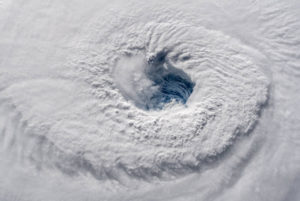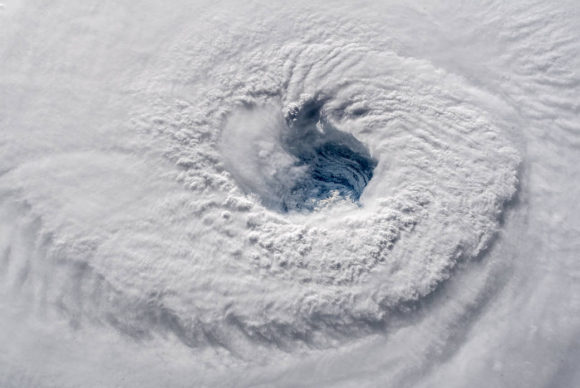Changes in the path and intensity of Hurricane Florence are keeping forecasters, government officials and insurers on their toes.
An update by AIR Worldwide yesterday indicated that storm surge heights of 9-13 feet could be expected.

“Florence’s slow motion just offshore will mean several high tide cycles could occur as Florence is making landfall, exacerbating the storm surge hazard threat,” said Dr. Peter Sousounis, vice president and director of meteorology, AIR Worldwide.
According to Gary Marchitello, head of Property Broking at Willis Towers Watson, “Hurricane Florence has the potential to cause significant insured losses to North Carolina, South Carolina and beyond. The possible scenario of the storm stalling in the vicinity of the coastline would bring prolonged hurricane-force winds, storm surge spanning multiple tide cycles and unprecedented rainfall and flooding.”
Cat modelers have estimated insured losses could reach $20 billion.
A recent bulletin by Fitch Ratings indicated that, “Primary property/casualty insurance writers across the multi-state forecast landfall area are expected to incur losses primarily from the high winds that are accompanying the storm toward the coast. The threat of extreme flooding has implications for the National Flood Insurance Program (NFIP), private market flood insurers, personal and commercial automobile writers, traditional reinsurers, and Insurance Linked Securities (ILS) markets.”
Fitch further noted that “insured losses related to storm surge and rainfall in the residential property market will largely fall to NFIP, which had a combined 532,489 policies in force in N.C., S.C., Georgia and Virginia as of August 2018.”
Despite record losses in 2017, Marchitello said the global property/casualty insurance market is well-capitalized, bolstered by alternative capital.
“Even if losses reach the high side of the range, a $20 Billion loss is not going to necessarily rock the industry,” he said. “I would estimate a loss of this size to be more of an earnings-event for insurance carriers, not a capital event. And, barring successive storms this year, this should not lead to a prolonged hardening of the market.”
He added that claims volume will likely be significant and coverage issues could be expected.
“An oft –seen coverage issue relates to ‘wind’ versus ‘flood’ and how the policy addresses flooding which accompanies Named Wind, storm surge or excessive rainfall as part of an insured’s hurricane limit/deductible or its flood sublimit/deductible. There are many variations in policies with significant recovery implications. Typically for coverage to trigger, the claim must derive from physical damage to ‘covered’ property and ‘perils insured’ under the policy,” Marchitello said.
Significant damage to buildings is expected if the storm stalls as predicted, according to catastrophe risk modeler RMS.
“Business interruption claims…are also expected to be significant – and could amount to roughly 20 -25% of the overall insured property losses,” said Marchitello. “Here too, there is a high potential for significant coverage issues, particularly around the coverages’ trigger. For example, there are extensions of coverage which almost always come into play for each policy. These include business interruption and/or shutdowns due to a range of issues, including: civil and military authority, ingress/egress, protection and preservation of property, contingent business interruption and service interruption.”
Insurers are just beginning to report on catastrophe claims response. GEICO reported its catastrophe team of auto damage adjusters stands ready to assist policyholders. Zurich North America has activated its CAT response plan, clearing adjuster schedules and securing specialists, like forensic accountants, building consultants, risk engineers and mitigation contractors so they can mobilize quickly to affected areas.
Willis Towers Watson’s specialized consultants across its National Property Claims and Forensic Accounting and Complex Claims (FACC) businesses have been mobilized to assist clients.
According to Fitch, the top five homeowners’ insurers as measured by statutory direct written premiums in N.C., S.C., Georgia and Virginia include State Farm Mutual Insurance Group, United Services Automobile Association (USAA), The Allstate Corporation, Nationwide Mutual Insurance Group and Travelers Companies, Inc. The top five commercial writers (Inland Marine, Allied Lines, Fire, Commercial Multi-peril non-liability) include Liberty Mutual Insurance Group, CNA Financial Corporation, Travelers, Nationwide, and American International Group, Inc. (AIG). The top five private flood writers include FM Global Group, AIG, Assurant, Inc., Zurich American Insurance Group and Swiss Re America Group.
Was this article valuable?
Here are more articles you may enjoy.


 First Brands Judge Approves Examiner to Probe Fraud Allegations
First Brands Judge Approves Examiner to Probe Fraud Allegations  Cyber Breach Affected 750,000 Canadian Investors, Regulator Says
Cyber Breach Affected 750,000 Canadian Investors, Regulator Says  US Lawmaker Unveils Bill Requiring Manual Car-Door Releases
US Lawmaker Unveils Bill Requiring Manual Car-Door Releases  JPMorgan Wins Gender Pay Gap Dispute Against London Analyst
JPMorgan Wins Gender Pay Gap Dispute Against London Analyst 